Have you ever taken the China high-speed train? Do you know anything about the Silk Road? If you join our China Train Tour through Silk Road, you will feel it’s fabulous to take a fast train that can travel at a speed of over 400 kilometers per hour. As for Silk Road, it is an ancient trade route, linking China with the West. Merchants on the silk road transported goods such as silk, spices and tea, and traded at bazaars along the way. Therefore, the road is called Silk Road. First, you will visit Beijing and then go to the starting point of Silk Road Xi’an. In Beijing to Xi’an train tour, you can see a perfect combination of modern and tradition. Next, you could enjoy grottoes, pagodas and ruins left by travelers along the Silk Road and also visit a fiery mountain during our Dunhuang to Turpan train tour. After visiting Kashgar, you will move to Shanghai, a renowned international metropolis, to appreciate its charm in China train tour in Shanghai. Do not hesitate! You will gain a lot with our China train tour.

Welcome to Beijing! Our guide is waiting for you at the airport arrival hall. After meeting you, we will drive you to the hotel.
Beijing serves as the capital of China, the political and cultural center of the country and the hub of international exchanges. It is also one of the six ancient capitals of China. Beijing has a history of more than two thousand years, and its first recorded name is “Ji”. In 1045 BC, Beijing became the capital city of some major countries such as Ji, Yan and so on. Beijing has been an important city and the center of northern China since Emperor Qinshihuang, the first emperor of the Qin Dynasty (221-207 BC), united China in 221 BC. Later, Beijing has successively been the capital for more than 1,000 years. It was officially established as the capital of the People’s Republic of China on October 1, 1949. You can say Beijing has witnessed the rise of China. At the moment, the city covers a total area of 16,410 square kilometers. It has a total population of over 21 million people. In addition, Beijing enjoys a continental monsoon climate, therefore, it is sticky and it rains a lot in summer. It is cold and dry in winter. If you come to Beijing in winter, please make sure you will bring enough clothes.
This morning, you will begin to explore Beijing by walking around Tian’anmen Square. Tian’anmen Square is located in the center of Beijing. It is 880 meters long from north to south and 500 meters wide from east to west. It covers a total area of 440,000 square meters and can accommodate one million people for grand gatherings. There are the National Flagpole, the Monument to the People’s Heroes, the Chairman Mao Memorial Hall, and the Zhengyangmen Gate Tower. Here we will introduce the outstanding Monument to the People’s Heroes, which lies in the center of Tian’anmen Square. It’s interesting that you can see eight gilded characters meaning “the people’s heroes will be forever remembered” written by Chairman Mao himself wherever you are in the northern part of the square. It is the first large memorial building built after the founding of New China, and also the virgin work in the history of China’s urban sculpture. There are more details about the monument. It is made up of 17,000 blocks of granite and Alabaster, a well-known crystal that heals its wearer against tension, headache, lack of concentration and problems related to painful joints. And the middle stone is vital, as the eight characters must be carved on an intact stone of about 15 meters long, 3 meters wide and 0.6 meters thick according to the decision made at the 1st Chinese People’s Political Consultative Conference. To ensure the stone would not be broken during the building and transporting process, the thickness of the center stone has to reach 3 meters. Thus, a question came to people’s minds “where to mine such a huge stone?” Experts finally determined to choose the granite on Mount Fu in Qingdao, Shandong Province. The hard and pure rock is the best choice. It weighs 300 tons so it’s not easy to transfer it to Beijing. Almost 7,000 people spent seven months transporting the big stone. While appreciating the Monument to the People’s Heroes, you will be further inspired by Chinese people’s hard work.
Then we will continue going north to visit the Forbidden City (closed each Monday), the imperial palace for the 24 emperors during the Ming (1368-1644) and Qing (1636-1912) dynasties. The Forbidden City covers an area of 720,000 square meters, which is equivalent to the area of one and a half Vatican. The palace is composed of exterior and interior courts. In the exterior court, there are three main halls including the Hall of Supreme Harmony, Hall of Central Harmony and Hall of Preserving Harmony. In the interior part, there are the Imperial Garden, three main palaces for emperor and empress, and twelve palaces on the east and west sides for the emperor’s other concubines. It’s worth mentioning a couple of huge stone lions in front of the Gate of Supreme Harmony. If you walk closer to look at the two lions, you can find that they both tread on a ball. The male lion steps on a ball representing power and unity, while the female lion shows she can be the mother of people. With artistic and ornamental value, stone lions are common objects in traditional Chinese culture. They are decorations often used in traditional Chinese architecture such as palaces, temples, pagodas, bridges, gardens and tombs. But more often, stone lions refer specifically to a pair of lions placed on the left and right sides of a gate. The two strong lions in front of the Hall of Supreme Harmony not only guard the palace but make sure the peace and safety of the Forbidden City. Besides, the dignified and magnificent stone lions in the Forbidden City are symbols of imperial power, as lions are the king of animals.
After lunch, you will go to the south of Beijing to visit the Temple of Heaven. It was the place where the emperors of the Ming and Qing dynasties worshipped heaven and prayed for good agriculture harvests. It covers an area of about 2.73 million square meters, which is 4 times larger than the Forbidden City. Here is an interesting story about the location of the attraction. According to history, Zhu Di, the third emperor of the Ming dynasty, usurped his nephew’s throne and demanded to build the Temple of Heaven. The reason that he worshipped heaven was that he was panic about the successive drought. He thought heaven was punishing him for his illegal and immoral accession to the throne. Then a minister suggested as long as the empress go to the southern suburbs to pray for rain, heaven would be moved and started to rain. Zhu Di was so worried that he immediately ordered his empress to pray for rain. It’s so hot at that time, let alone the empress had to stand on the then a loess slope for a long time. Therefore, she quickly felt dizzy and burst into tears for her misery. What could be worse? However, it suddenly began to rain heavily and the empress was like a drowned rat in a few minutes. Zhu Di was very pleasant and regarded the place as a treasure. Therefore, the emperor chose the place in the southern suburb to build the Temple of Heaven. Isn’t it funny?
Today your last attraction is the Summer Palace, the imperial garden in the Qing dynasty. It lies in the northern suburb of Beijing. It covers a total area of 3 square kilometers. As the best-preserved imperial garden, it is known as “the Museum of Imperial Gardens”. In the Summer Palace, there is a long hallway with a total length of 728 meters. It is the longest corridor in all of China’s gardens. In 1992, it was listed in the Guinness World Records. There are more than 14,000 paintings on each beam of the corridor, including landscapes, flowers, birds, fish, insects, and famous people in traditional Chinese stories. The long hallway has three features. First, it looks like a ribbon, which connects the scenic spots closely. Second, there are three pavilions at each end of the corridor, adding harmony to the surrounding environment. Third, paintings in the long hallway are not the same and you can even see famous stories from the Four Great Classical Novels of Chinese literature, such as Water Margin, The Journey to the West, A Dream of Red Mansions and Romance of the Three Kingdoms. Have you read these novels? You will be impressed by some plots and stories while walking along the long hallway.
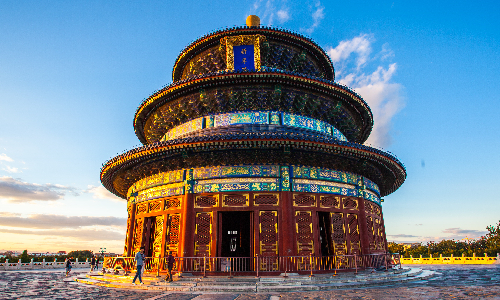
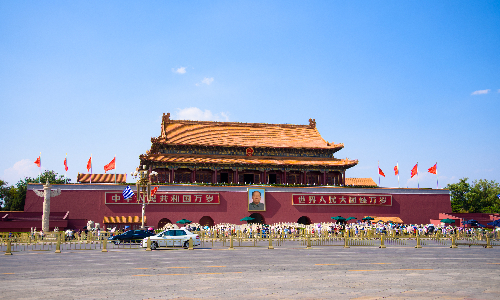
This morning, we will drive northward for about an hour to the Ming Tombs, 50 kilometers away from the center of Beijing. Thirteen emperors of the Ming Dynasty were buried here, thus it is also known as “The Thirteen Ming Tombs”. It is the best-preserved imperial tomb cluster with the largest number of emperors buried in the world today.
Here we just introduce the first tomb of the Ming Tombs. The Chang Tomb is a joint tomb of Emperor Zhu Di and his Empress Xu. Zhu Di, also known as the Yongle Emperor, was the third ruler of China’s Ming Dynasty. He launched ambitious projects like lengthening and widening the Grand Canal, which carried grain and other goods from southern China to Beijing. Zhu Di also built the Forbidden City and attacked the Mongols who threatened the Ming’s northwestern flank many times. On August 12, 1424, the 64-year-old Yongle Emperor died on the road back to Beijing. His followers fashioned a coffin and carried him to the capital in secret. Emperor Zhu Di was buried in the Chang Tomb in the Tianshou Mountains at last. Empress Xu is the daughter of General Xu Da, one of the founding fathers of the Ming Dynasty. She is quiet and smart and loves reading books. She and Zhu Di are a perfect match. They love each other and become soulmates. They always talked about historical books, Buddhism as well as their hobbies. After she died in 1407, Zhu Di then became temperamental. No wonder they are a model couple and are buried together. Does this story remind you of your beloved one? Let’s go to admire their unswerving love.
After lunch, you will be driven to the Mutianyu Great Wall, 40 kilometers east of the Ming Tombs. It takes about an hour to get there. It is 5400 meters long and wins fame as the longest part of the Great Wall in China. When you reach there, you could see this part has not been completed yet. Why? There is a sad story about the origin of the Mutianyu Great Wall. In the Ming Dynasty, the imperial government sent Qi Jiguang to supervise the building project. He once disciplined his troops and fought against Japanese pirates in numerous battles. You can call him a military talent. Therefore, he was unwilling to do the small and easy job, yet he had nothing to do but accept the task. With his soldiers’ hard work, the rudiment of the Great Wall appeared. However, Qi Jiguang was framed because someone disliked his integrity and paid off a man who built the Great Wall to accuse the military leader of corruption to the imperial court. The emperor then fired him so he returned to his hometown. Finally, this section of the Great Wall fell into disuse. Yet you can still feel its beauty and military value while appreciating the superb building. You can easily go up to the Mutianyu Great Wall by chairlifts or cable cars. When you finished visiting, you could go down by toboggan. You do not have to worry about your safety, as the equipment is checked every day and there is also staff to guide you on how to use these transportation tools.
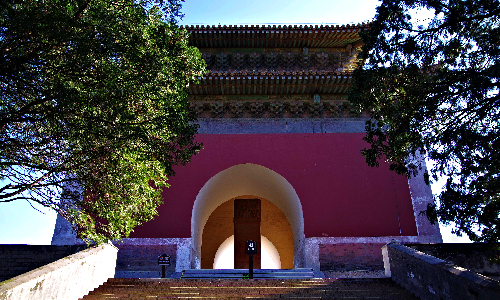
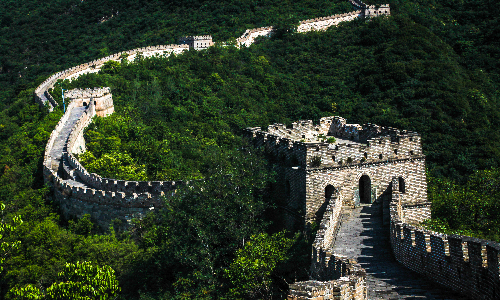
 Xi’an
Xi’an This morning, you will go to the Hutong for sightseeing. Hutong is the alleyway of Beijing’s old town, where you could deeply feel the unique charm of old Beijing. There are various Hutongs located everywhere in Beijing. If you take to air and look down, you will find they together constitute a huge maze. Taking a rickshaw is the most traditional and relaxing way to know about the old Beijing and Hutong culture. You can see the old people playing Chinese chess in the Hutong, hear the cries of booth owners, and smell the scent of the dishes wafting from the Siheyuan (traditional dwellings of local Beijingers). You can also make a family visit to Siheyuan in the Hutong to put yourself in a traditional Beijing-style courtyard and a hospitable and harmonious local family. You may find local Beijingers are into planting flowers and raising fish and birds. You can talk with the owner, drink tea with them and learn the Beijing dialect. You will have great fun.
After lunch, you will be transferred to the railway station in Beijing. Then you will take the estimated train G87 14:00/18:19 to Xi’an. You may wonder why there is a letter G. As G refers to “Gaotie” in Chinese, meaning China high-speed train, which connects major cities in China. It can reach a top speed of 350 km/h (217 mph) so you could travel between the two cities in four hours. Upon arrival, your tour guide will pick you up there and transfer you to the hotel.
Xi’an, the capital city of Shaanxi, records the great changes of the Chinese nation just like a living history book. In history, it has served as the capital city for more than ten dynasties. At the moment, you can notice history and modernity meet in Xi’an. You could not only visit attractions like the Big Wild Goose Pagoda and Terra Cotta Warriors and Horses Museum but enjoy Muslim culture in a commercial street. During your stay in the ancient city, you must miss the local snacks. Liangpi (cold noodles), for example, is a must-eat noodle dish while visiting Xi’an. To prepare the dish, noodles made from either wheat flour, rice flour, or a combination of both are dressed with peanut sauce, chili oil, and vinegar, while typical garnishing includes thinly sliced strips of cucumber, bean sprouts, and cilantro. You will have great fun here!
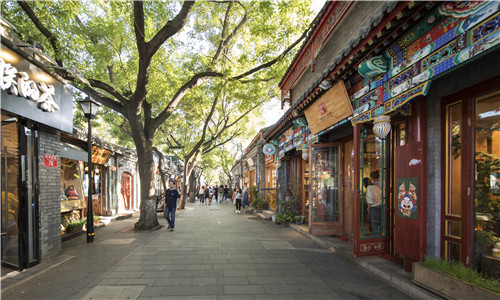
This morning, we will drive eastward for about 50 minutes to the Terra Cotta Warriors and Horses Museum, 40 kilometers away from Xi’an downtown. Known as the eighth wonder of the world, Terra Cotta Warriors and Horses are the funerary objects of Emperor Qinshihuang (259~210 BC), the first Emperor of China. In the museum, you have an excellent opportunity to watch chariots, bronze weapons, life-sized terra cotta warriors and horses in three pits. In addition, there is an Exhibition Hall. It houses three display rooms exhibiting various articles from the Qin Dynasty. The most famous one is the Bronze Chariot and Horses. In 1980, archaeologists discovered two sets of bronze chariots and horses from the Mausoleum of China’s first emperor. Each chariot is equipped with four bronze horses and is made half the size of the real chariots in the imperial fleet of Emperor Qinshihuang. The cover and carriage are painted with exquisite patterns. The gold and silver ornaments on the two chariots weigh as much as 14 kilograms, showing the noble grade of the emperor’s exclusive ride. Seeing the model, you must be amazed at how luxurious the emperor’s life would be. Though they have been buried under the earth for thousands of years, the carriage wheels can still rotate and the halter and the rein are still flexible. How amazing it is!
After lunch, we will visit the Big Wild Goose Pagoda. Located in the Ci’en Temple, it was built by Xuanzang, a Buddhist monk and Chinese pilgrim to India, to preserve the Buddhist sutras that were brought back to Chang’an (now Xi’an) via the Silk Road. Xuanzang then translated the sacred scriptures of Buddhism from Sanskrit into Chinese and founded in China the Buddhist Consciousness Only school. The pagoda is seven-storey high, with a total height of 64 meters. It is the oldest and largest brick pagoda of the Tang Dynasty. You can see typical things of Buddhism and read poems of the Tang dynasty on each floor. Take the second floor for example. There is a bronze Buddha statue of Sakyamuni, a precious cultural relic of the early Ming Dynasty. It is deemed as “the treasure of the pagoda”. When tourists visit the Big Wild Goose Pagoda, they must worship the statue. What’s more, there are two murals of Manjusri Bodhisattva representing the wisdom of prajna, and Puxian Bodhisattva, the Bodhisattva of benevolence, as well as several calligraphic paintings of modern celebrities on both sides of the pagoda wall. If you are interested in Buddhism and Chinese poems, the pagoda is worth going to.
Then we will walk around Muslim Street, where you can eat local food and buy souvenirs for your families and friends. Here you can deeply feel the charm of old Xi’an and Muslim culture. The commercial street refers to many busy streets instead of only one. At the moment, more than 60,000 Muslims live on these streets. You can easily know the feature of Muslim Street. That is stores are owned and operated by Muslims from the Hui ethnic minority. You may be curious why there are so many Muslims since Xi’an is not a gathering place for ethnic minorities. On the one hand, the foreign envoys and merchants who came to Chang’an to do business inhabited the street. On the other hand, now people in the street are mostly descendants of these ancient immigrants. Thus, the street is called “Muslim Street”.
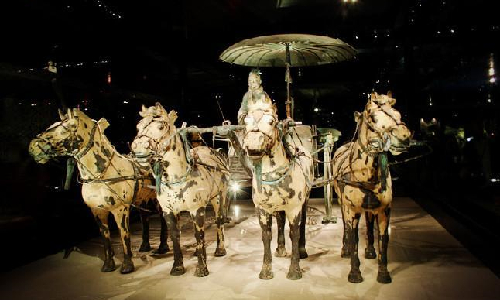
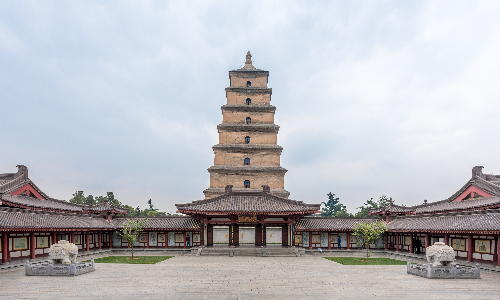
 Dunhuang
Dunhuang After breakfast, you will be transferred to the railway station in Xi’an. Then you will take the estimated train D2737 10:26/21:12 to Dunhuang. Have you gotten used to the China fast train? You must be attracted by the fast, safe, punctual and convenient transportation. As Xi’an is 1730 kilometers from Dunhuang, it takes more time to get there. Although you reach Dunhuang in the evening, you do not need to worry about the accommodation. Upon arrival, your tour guide will pick you up there and transfer you to the hotel.
Tomorrow we will continue to explore another city along the Silk Road. Dunhuang lies in Gansu Province in northwest China. It has a population of 185,000 people and covers an area of 31,200 square kilometers. In ancient times, Dunhuang was the first trading town reached by foreign merchants who came to Chinese-administered territory from the west. At that time, it was the most westerly frontier military garrison in China. With the flourishing of trade along the Silk Road, it was prompted to become the most international trade center in ancient Chinese history. It provided the only access westward for the Chinese Empire and eastward for western nationalities. In the following days, you will appreciate the landscape in Dunhuang and visit places built by people traveling along the business road. As a city in a desert, it is very hot and sandstorm usually happens. Therefore, you’d better prepare sunglasses, hats, pants and long-sleeved clothes to protect you.
This morning, we will visit the Mogao Grottoes. Located on a cliff, it is the largest grotto in Dunhuang and Buddhist statue and murals are abundant here. It was listed as the World Cultural Heritage in 1987. It boasts 735 grottoes, 45,000 square meters of frescoes and 2,415 painted sculptures made of clay. Why the sculptures are not made of solid material? Other types of statues like stone sculptures are not suitable and convenient here because of the soft and loose soil. Therefore, only four Buddha statues of Mogao Grottoes are made of stone inside and covered by mud. Others’ inner parts are made of wood. Once you enter the number 96 grotto, you will surely be shocked by a majestic Buddha statue. As the largest Buddha statue in the attraction and also in the world, it is a 34.5 meters high Maitreya Buddha. It was built when Wu Zetian, the only female emperor in China’s history, ruled the Tang dynasty. When she was in power, she made Buddhism serve her governance. She even took advantage of some monks to spread that she’s the reincarnation of Maitreya Buddha. After she became the emperor, she ordered to build Buddha sculptures to express gratitude for the help of Buddha and further strengthen her ruling position under the protection of Buddhism. That’s the reason why there are so many huge Buddha statues.
After lunch, we will go to the Crescent Lake, which was also called Sand Well. It is located at the north foot of the Echoing Sand Dune, our next stop. The lake is nearly 100 meters long from north to south and about 25 meters wide from east to west. The deepest water is around five meters. It looks like a half moon so it is called the Crescent Lake. As it lies in deserts, it wins a reputation as “the First Lake in Deserts”. There is a legend about the origin of the moon-like lake. It is said that there was a temple instead of a lake. On the day when men and women who convert to Buddhism were celebrating Buddha’s birthday in the temple, a Taoist priest came up and shouted to challenge the director of the temple, who was spraying a bowl of holy water to keep diseases away from people. The Taoist swung his sword and muttered magical words. Suddenly, the wind blew off sand grains and the sky became dark. The temple was buried in the sand in a couple of minutes. It was strange that the bowl of holy water stood still and no sand grains dropped into it no matter how hard the defiant man used his magic. He had no choice but to leave angrily. When he walked a few steps, he heard a loud crash. The bowl broke down and the holy water turned into a lake. The evil man then became a pool of black stones as a punishment given by the Buddha. As the holy water was originally given by Buddha Sakyamuni to protect people from diseases and disasters. Finally, the water flows and becomes a lake.
Our last attraction is the Echoing Sand Dune, the twin sister of the Crescent Lake. Located at the edge of Kumtag Desert, it is one of the Four Great Echoing Sand Dunes in China. Why it is named “Echoing Sand Dune”? Could the dune echo? While people are sliding down the dune, the sand grains can make a sound due to mutual friction. The deafening sounds echo together and they can even be heard by people living in the city. Therefore, it is known as the Echoing Sand Dune. The dune is made up of sand grains of various colors, such as red, yellow, blue, white and black. Dunes have different sizes and forms: some are like the moon while others are like pyramids; Some are like snakes while others are like fish scales. You will never forget the scenic spot once you visit here. In addition, the attraction now offers recreational activities from camel riding, sand skiing, grass skiing, desert motorcycle riding to archery. You must be too excited to wait for another minute. Let’s go to play with sand and make some sounds. You will have great fun!
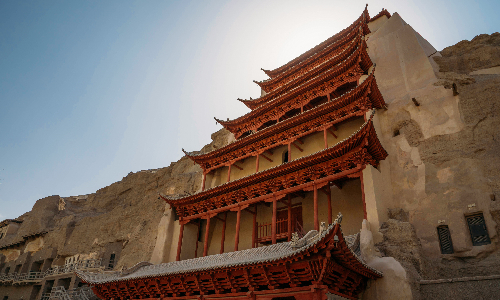
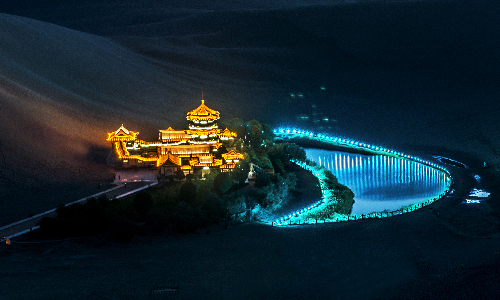
 Turpan
Turpan This morning, we will visit the White Horse Pagoda. The octagonal pagoda was first built in the late Qin dynasty (384-417BC). Then it was rebuilt in 1843. The 12 meters high pagoda has nine storeys. There is a legend about the origin of the White Horse Pagoda. It is said that the pagoda was built by Kumarajiva, a Buddhist scholar from Qiuci and one of the greatest translators of Buddhist scriptures from Sanskrit into Chinese, for his beloved white horse. Legend has it that the emperor of the Qin dynasty ordered a military troop to fight against Qiuci in 382BC and bring back the greatest philosopher by which he was deeply impressed. After the troop conquered Qiuci and the other 30 states in the western regions in 384, the eminent monk Kumarajiva was invited to return to the east to teach sutras. When he arrived at Dunhuang, the Indian Buddhist dreamed his white horse told him it had finished its mission to send him to the east and it had to go back to heaven. When the famous Buddhist woke up the next day, the white horse was really dead. Then the local Buddhist believers buried the white horse and built the pagoda to commemorate it. Therefore, people name the pagoda “White Horse Pagoda”. As the horse died when it was nine years old, people built nine floors.
After lunch, you will be driven to the Liuyuan railway station in Dunhuang. Then you will take the estimated train D55 15:27/18:48 to Turpan. You can see that we will take the China bullet train again as before. The train looks like a bullet so it is surnamed bullet train. Besides, the name shows that this kind of transportation tool is fast and efficient. Please enjoy the pleasant journey. Upon arrival, your tour guide will pick you up there and transfer you to the hotel.
Turpan serves as an important town on the ancient Silk Road. In Uygur, “Turpan” means a rich and fertile place. Located in the middle of Xinjiang Uygur Autonomous Region, it is adjacent to Urumqi. Turpan boasts a long history. Since the Han Dynasty, it has been the political, economic and cultural center of China’s western regions. It covers an area of 15,738 square kilometers and has a population of about 694,000 people. There are 24 ethnic groups, including the Uygur, Han, Hui, Kazak, Manchu, Zhuang and Miao. Of course, Uygur accounts for most of the total population. Located in the Turpan Basin, a typical graben basin and the lowest in China, Turpan is known as the “fiery land”. As it’s very hot, with the highest temperature of 49.6 degrees Celsius in summer, and it does not rain all year round. Thanks to the unique climate here, grapes, watermelon and other fruits are abundant. It is also known as the “grape city”. While visiting the city, you can see grapes sheds and beds under them. In hot summer, the local people could lie on the beds and avoid exposure to ultraviolet rays. In addition to the various fruits, unique landscape and ethnic customs, Turpan boasts scenic spots and historic sites. In the next few days, you will visit ancient caves and cities, and special and interesting mountains and equipment.
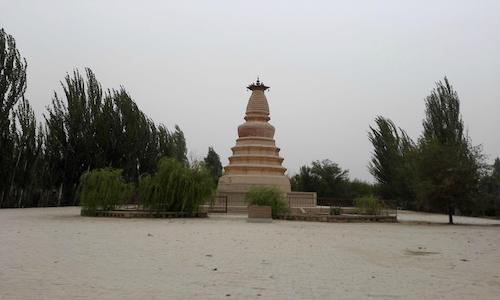
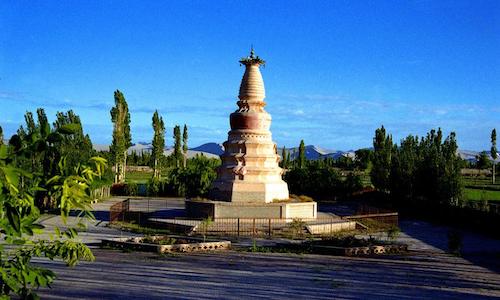
This morning, we will visit the Bezeklik Thousand Buddha Caves, 40 kilometers east of the center of Turpan. It will take 50 minutes to get there. It is located at the foot of the Flaming Mountains. There were 83 caves but only 57 exist now. Among them, there are more than 40 murals, with a total area of 1,200 square meters. It boasts the most caves and murals among the existing grottoes in Turpan, and it is one of the larger Buddhist caves in Turpan. Here we introduce murals in the number 31 cave. Although the cave was severely destroyed, you can still see the walls are made in a complex way, mixing straws and clay and using lime and pigment. You can see paintings of a thousand Buddhas, each of which is composed of a head, a body, legs and a base. On the left wall, you can see the only painting of an official of the Han dynasty in the caves. Over the man is a tree, on which there are a male and a female ghost, as Indian people believed in trees and ghosts. If you are interested in Buddhism, you must not miss the attraction.
After visiting the Bezeklik Thousand Buddha Caves, you will be driven southward for 15 minutes to the Flaming Mountains. It is 10 kilometers away from the last attraction. In Uyghur, people give the mountains the name of “Red Mountains” and people in the Tang dynasty called them “volcanoes” because of the extreme heat. The mountain is more than 100 kilometers long and is about 500 meters above sea level. In midsummer, the sandstone shines and flashes and you can even see the rising heat waves under the sun. The scene looks just like a raging flame. Therefore, the scenic spot is called the Flaming Mountains. As the hottest place in China, it has the highest temperature in summer up to 47.8 degrees Celsius and the highest surface temperature above 70 degrees Celsius. You can even cook boiled eggs in the sand. There is a legend about the origin of the Flaming Mountains. It is said that there was an evil dragon who ate virgins in a deep mountain. The local supreme ruler dispatched two brave men to subdue the dragon to protect people. After a thrilling battle, the dragon was killed and its red blood flew all over the mountain. Therefore, the attraction is named Red Mountains by the Uyghur people.
After lunch, we will drive southward for about 25 minutes to the Gaochang Ruins, 20 kilometers away from the Flaming Mountains. Once the capital city of Gaochang, it was the first central town in Turpan Basin from the 1st century BC to the 14th century AD. Entering the ruins, you can find an outer city, an inner-city and an imperial palace. There are also religious buildings, where you can see what happened in the once-prosperous city. The ancient city witnessed the opening and prosperity of the Silk Road by setting up prefectures and counties, showing its important role in cultural exchange and mutual learning of religions and architectural technology in the Turpan Basin. It is the largest ancient city ruins in the western regions. Shaped in rectangle, it has tall walls made of earth and the walls are over ten meters high. Gaochang city was abandoned in the war at the end of the 13th century so you could see few buildings. There are nine gates in the city but only the gate on the west and north are relatively intact. You can feel a different beauty and know the history of the Gaochang Ruins despite its comedown.
Then we will drive westward for about an hour to Turpan downtown, 40 kiometers away from the Gaochang Ruins. You must be very tired after the busy day. Please have a good rest at the hotel.
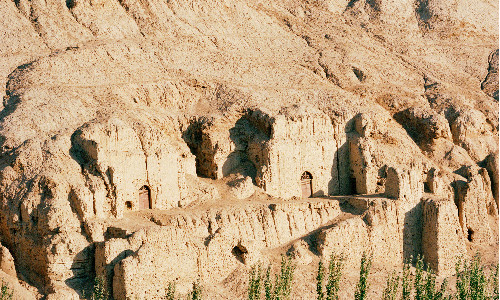
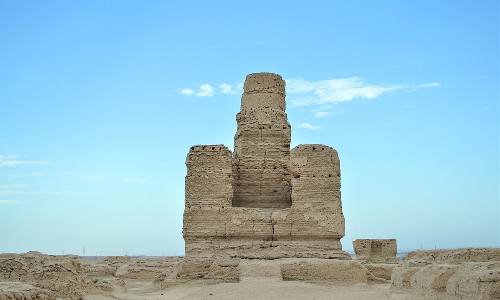
 Urumqi
Urumqi This morning, we will see a smart invention, the Karez Well. It is an underground water conservancy tool created by farmers in the arid area. The Karez Well, once called a “well canal” in ancient times, draws water from the desert and then turns the desert into an oasis. The convenient well works by taking advantage of the natural slope of mountains to extract rainwater and melting water of glaciers and snow that seep into the ground to the surface. People use the water from the wells to irrigate vegetables and fruits and meet their water demand for production and household. However, it’s worth mentioning Karez Wells are different from each other because they have to be designed according to the land structure. Generally speaking, a Karez Well includes a vertical well, an underground channel, a small reservoir and a channel on the ground. It’s a useful and simply constructed device to fetch water for people in Turpan.
After seeing the Karez Well, we will visit the Sugong Pagoda. Sugong Pagoda, also named aka Emin Minaret, stands 2 kilometers southeast of Turpan. The cylindrical Sugong Pagoda is 40 meters high and its body is covered by khaki bricks with different patterns, including hill, wave, diamond and four-petaled blossom. Besides, a domed mosque stands nearby the pagoda. It is one of the biggest Islamic mosques in Turpan. It covers an area of 2500 square meters and can accommodate thousands of people for grand gatherings. At the time of some traditional festivals, Muslim people push their way to the Sugong Pagoda to pray for blessing just like a pilgrimage. You must be impressed by the architecture and Muslim culture if you go there.
After lunch, you will be transferred to the railway station in Turpan. Then you will take the estimated train Z69 15:27/16:52 to Urumqi. You can see plains, rivers, trees and mountains through the window of the China train. Appreciating the beautiful scenery, you will not regret taking the fast train. Upon arrival, your tour guide will pick you up there and transfer you to the hotel.
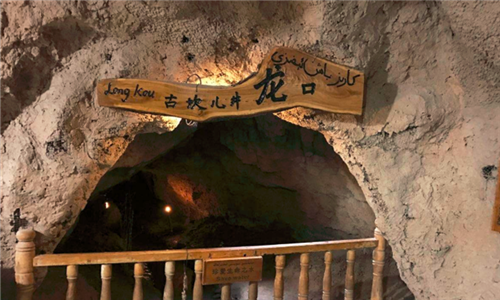
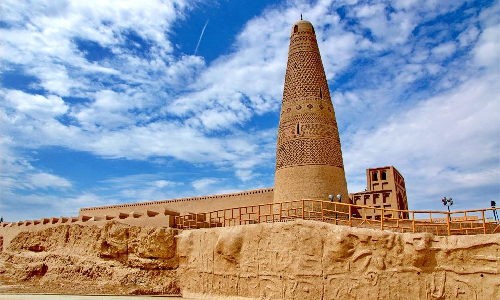
 Kashgar
Kashgar In the morning, you will be transferred to the airport and head to Kashgar by taking the estimated flight GS7563 11:05/13:00. Your tour guide will be waiting for you at the arrival lobby and then take you to the Big Bazaar.
The word Bazaar in Uyghur means a market. The full name of the Big Bazaar is Central and West Asia International Trade Market and the market is also known as the East Gate Big Bazaar. It covers an area of 17 hectares. There are 21 markets instead of only one. They together make up the big market, the largest international trade market in northwest China. Kashgar was a famous historical and cultural city on the ancient Silk Road, as well as a commodity distribution center. Therefore, businessmen from Xi’an all met here wherever they went to. At the moment, the markets here still attract a lot of people. You can buy livestock, local specialties, handicrafts, daily necessities, fruits and vegetables and other things you want.
After visiting the Big Bazaar, you will be driven to the hotel. You’d better have a good rest for tomorrow’s busy schedule.
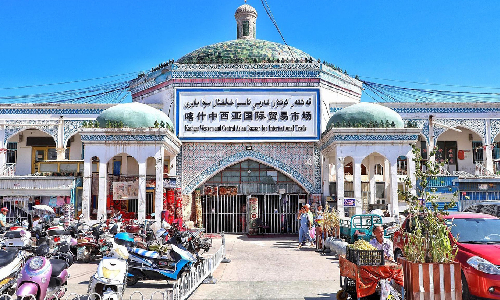
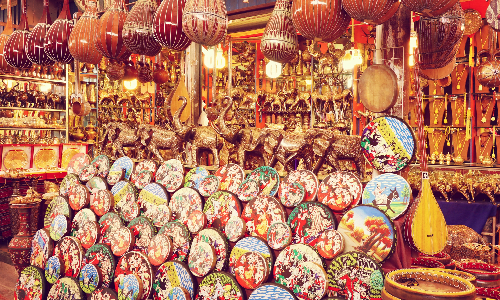
This morning, we will visit the Abakh Hoja Tomb, a typical Islamic ancient building and the tomb of a rich Muslim’s descendants. It covers a total area of 2 hectares. It is said there are 72 people from five generations of the Abakh Hoja family. Therefore, it is named Abakh Hoja Tomb. Legend has it that a woman, who was the favorite concubine of the sixth emperor of the Qing dynasty Emperor Qianlong, was also buried here. She was called “sweet-smelling concubine” because her body always gave out the fragrance of flowers. The emperor liked her so much that her body was sent back to her hometown after she died. Thus, it is usually known as “the tomb of sweet-smelling concubine”. It is 40 meters high and consists of a gatehouse, small and big chapel, main tomb chamber and hall for teaching the Koran. The whole complex looks like a magnificent palace. You can see an exquisite tower on top of the dome and a gilded crescent over the tower. Though the tomb of the sweet-smelling concubine is located in the northeast corner, you can easily find it. If you see words on a tablet are written in Uygur and Chinese and a tomb mound is wrapped with blue glass and various patterns of cloth, you find exactly the well-known tomb. These covers show respect to the dead and also protect the tomb mound. Have you become interested in Muslims’ traditions and culture after visiting the Abakh Hoja Tomb? If you want to learn more, please do not worry as we will go to a mosque later.
Let’s continue to know the Muslim in the Id Kah Mosque. Id Kah means “joyous and happy”. While visiting the mosque, you may forget your worries and calm down. The mosque was built in 1442. As the largest mosque in Turpan, it covers an area of 16,800 square meters. It is composed of a gate, two palaces, a hall, a court, a lighthouse and a domed house. In ancient times, the mosque was also an important institute for spreading Islamic culture and cultivating talents such as eminent Islamic clerics and scholars, as well as some influential poets, writers, historians and translators. They all made a great difference in religion at home and abroad. Here it’s necessary to know some taboos before entering an Islamic shrine. Please do not make any noise or walk in front of the Muslims who are worshiping. Besides, please tidy up your clothes, or you will not be allowed to get into the mosque.
After lunch, we will go to the Kashgar Ancient Town surrounded by walls made of raw soils. It has been the biggest city in south Turpan for hundreds of years. It has always been the transportation hub and commodity distribution center of China and the western states. Thanks to its geographical advantage, its trade and business developed quickly. You may wonder why the local people did not build decent houses as they live in a highly developed town. That’s because the building of dwellings must depend on geography, local customs, religious beliefs, cultural traditions and other factors. Today, you can see houses made of earth ranging from bungalows to multi-storey buildings. Seeing the exotic buildings and the architectural decorations, you can deeply feel the customs and traditional culture of the Uyghur ethnic group. What a different and attractive town!
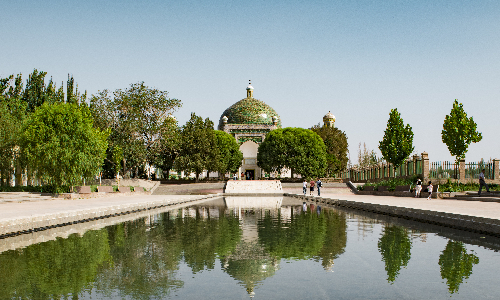
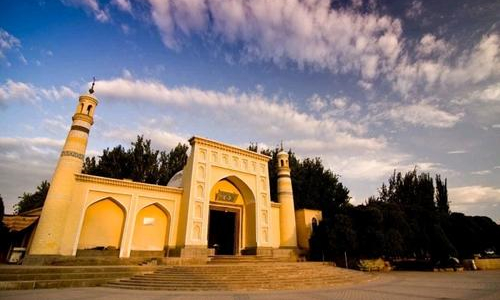
 Shanghai
Shanghai This morning, we will visit the Gaotai Uighur Dwellings, a living area where people of the Uyghur ethnic group gather. Located in northeast Kashgar, it is built on a loess cliff of more than 40 meters high and 800 meters long. With a history of 600 years, it is one of the best places to display the local customs and architectural style. Uyghur people have lived here for generations. When the family population grows, a floor will be built on top of the original houses. Thus, you can see tall buildings with different heights. And alleyways stretch to all directions between these haphazardly constructed buildings. You would get lost without the guide of local people. After entering a house, you may find plants like mulberry, rose and grapes, as the local people love flowers. Let’s go to explore the ancient dwellings and chat with people of the Uyghur ethnic group.
After visiting the Gaotai Uighur Dwellings, you will be transferred to the airport and head to Shanghai by taking the estimated flight CZ6997 14:30/22:00. Your tour guide will be waiting for you at the arrival lobby and then transfer you to the hotel.
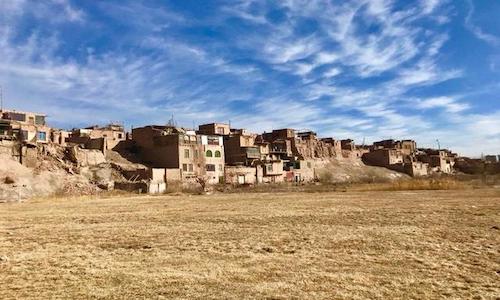
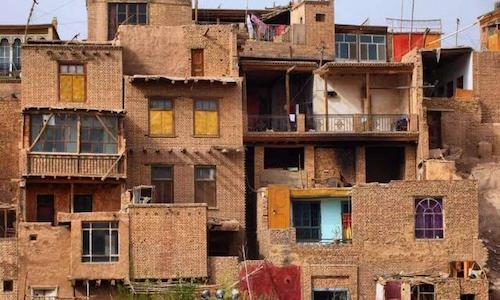
This morning, we will visit the Yu Garden (Closed on Mondays), a classical garden of the southern regions of the Yangtze River. It was built in the Ming Dynasty. It covers an area of more than 20,000 square meters. Here you could see a famous and beautiful stone, a hall, where ordinary people revolted against the government in 1853, and other tourist attractions such as Town God’s temple and commercial streets. There is a ginkgo tree in the garden and it is 21 meters high. It is said it’s planted by the owner of the garden and it’s very old with a history of more than 400 years. Besides, the Yu Garden has attracted political leaders around the world in recent years, such as the king of Cambodia Norodom Siha, French president Macron and his wife, and the Prime Minister of Russia Medvedev. You will have a good time and enjoy the graceful landscape.
Then we will visit the Jing’an Temple, the oldest Buddhist temple in Shanghai. It covers a total area of 22,000 square meters. There is a legend about the name of the temple. It’s said that there is a well where wild ghosts live under the Jing’an temple. Therefore, people build a temple here and name it Jing’an, which means “to quiet and tranquilize”, to seal the ghosts under the well forever. On the second floor of the temple hangs the Peace Bell, which is 3.3 meters high and weighs 7.3 tons. It is made of bronze and can make a gigantic sound. Isn’t it wonderful to meditate in the quiet temple of such a noisy city?
After lunch, we will go to the Shanghai Tower. It covers an area of 578,000 square meters and boasts 127 floors above ground and 5 floors underground. Like most modern skyscrapers, the 632-meter-high building is no more than an office building. It consists of nine sections and each area has its lobby and atrium sandwiched between internal and external glass walls. The first zone houses retail stores; office areas are from the second to the sixth zone; hotels and viewing platforms lie in the zone seven to nine. You can even go up the 118th floor of the building and overlook the scenery and the surrounding buildings. You will be shocked by the smart design.
After visiting the Shanghai Tower, you will walk around the Nanjing Road, the earliest commercial street in Shanghai. There are many shops, stalls and time-honored stores so you could enjoy food and shopping very much. The Nanjing Road can be seen as a “shopping paradise” in Shanghai. If you plan to buy gifts for your families and friends, you can go to the No.1 Department Store with eight floors. You can buy everything you want from jewelry to clothes and shoes. When you are just hunger for nibbles, the Shanghai First Provisions Store is a good choice. It offers snacks, family food and other healthy food. Besides, you could try snacks like Nanxiang steamed stuffed bun, fried stuffed bun, and chop rice cake. What are you waiting for? Let’s give it a shot!
At last, we will go to the Bund, which lies beside the Huangpu River in Shanghai. It is 1,500 meters long. After Shanghai opened its port, foreign banks, commercial firms, and newspaper offices sprang up like mushrooms on the west side of the Bund. The Bund has become the financial center of China and even the countries of East Asia. On the Bund, there is a historical architectural complex lining along the road including Gothic, Baroque and other western styles. It’s worth mentioning the nigh view of the Bund is more beautiful. If you take a ship cruising on the Huangpu River, you can enjoy the sights from a broad view.
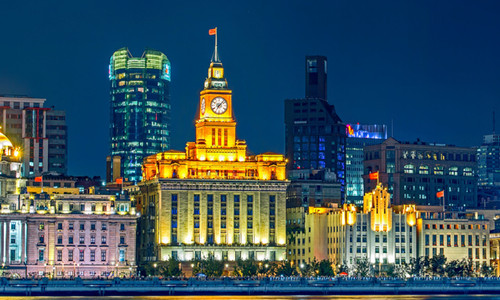
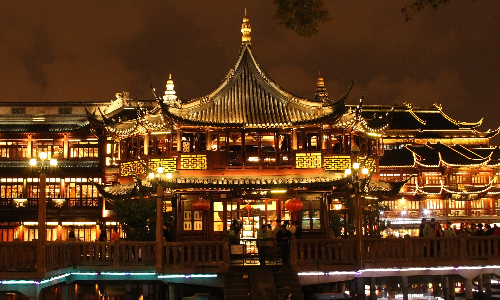
Your private guide will pick you up from the hotel and escort you to the airport so that you can board the flight back home after this private 15 days China train tour.
Author: Zhang Liya
| City | Five Star hotel list | Four Star hotel list |
|---|---|---|
| Beijing | Sunworld Dynasty Hotel Beijing Wangfujing | Sunworld Hotel Wangfujing |
| Xi'an | Tianyu Gloria Grand Hotel Xi'an | Sunworld Dynasty Hotel |
| Dunhuang | Wan Sheng International Hotel | Gansu Dunhuang Hotel |
| Turban | Mercure Hotel Turpan Downtown | Jinjiang Metropolo Hotel - Turpan Administration Center |
| Urumqi | Grand Mercure Urumqi Hualing | Tumaris Hotel |
| Kashgar | Yue Xing Jin Jiang International Hotel | Tarim Petroleum Hotel |
| Shanghai | Ocean Hotel Shanghai | Courtyard by Marriott Shanghai Central |
 |
![]() About your child or infant, please contact us for a discounted price.
About your child or infant, please contact us for a discounted price.



We started with a few days in Beijing & ended in Shanghai, from where we visited the Forbidden City and Great Wall. In between we visited Terra Cotta Warriors Museum, Panda Base, Shanghai Disneyland.

We had a wonderful holiday in China which will remain long in the memory. China is a breathtakingly beautiful country full of splendid temples and palaces, mountains and rivers, peaceful rural scenes and bustling shopping streets.
 QUICK ENQUIRY
QUICK ENQUIRY